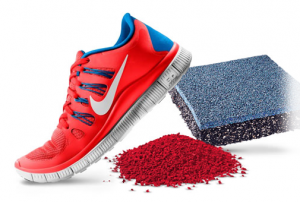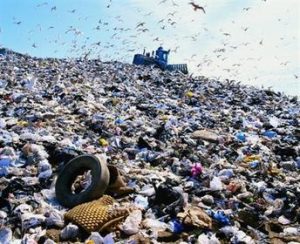“The True Cost,” a documentary which focuses on the impact of the fashion industry, better known today as the fast fashion industry, reveals who is really paying the price for clothing. H&M is featured in this film as one of the fast fashion “giants,” and before this year I had heard nothing of H&M’s sustainable practices, despite having shopped there quite frequently.
It turns out, in 2013 H&M launched a worldwide garment collection program (1). No matter the brand, clothing can be taken to any H&M location to be sorted into three categories:
- Re-wear: to be resold in second-hand clothing stores;
- Reuse: turned into new products, such as cleaning products;
- Recycle: made into textile fibres to be used as insulation and cardboard boxes.
H&M calls for “the useless, the misfits, the redundants,” and according to their website, over 40,000 tonnes of garments have been collected and given a second life. However, the pieces sorted into the re-wear category are much more problematic than they may seem.
“True Cost” mentions that only 10% of clothes that are donated end up being sold (2). What about the other 90%? A significant proportion are sent overseas so that they can be re-worn. One outcome of the redistribution to developing countries has been harm to local industries, as jobs opportunities are taken away from textile workers (4). The ultimate result: millions of dollars are spent on transporting this clothing, to have a significant portion end up in an “exotic” landfill.
So how can we better utilize the clothing that we no longer want? The website 1 Million Women has a few suggestions:
- Do not donate trash: this saves charities unnecessary expenditures.
- Take your clothing to a local organization: this increases the chance that someone will benefit from your donation.
- Just don’t donate: repurpose your used clothing yourself. (3)
While H&M’s garment collection program is taking a step toward environmental sustainability, I’m interested to see if social sustainability will follow.
References:
- https://about.hm.com/en/sustainability/get-involved/recycle-your-clothes.html
- https://www.1millionwomen.com.au/blog/5-crazy-facts-new-fashion-documentary-true-cost/
- https://www.1millionwomen.com.au/blog/the-pros-and-cons-of-donating-clothes-to-charity/
- https://fashionista.com/2016/01/clothing-donation
 Overall, a significant number of positive changes have been made at Nike and are continuing to be developed in realtime. The company is focused on the footwear industry, which is logical considering they are deemed one of the most, if not the most, popular footwear brands in the world (1).
Overall, a significant number of positive changes have been made at Nike and are continuing to be developed in realtime. The company is focused on the footwear industry, which is logical considering they are deemed one of the most, if not the most, popular footwear brands in the world (1).
 Sources
Sources